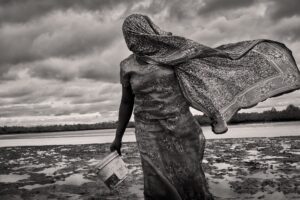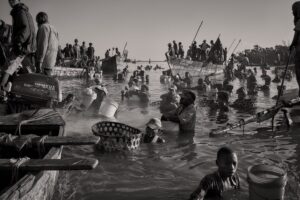Six degrees south: this is the exact geographical center of the Swahili Coast, a unique physical, historical and cultural entity running from Southern Somalia to Mozambique, which first grew in the 10th century through trade with the Arab world, India and China.
Gold, coconut, ebony, mangrove wood, sisal, myrrh and the infamous slave trade helped make the wealth of this region, slowly shaping it and giving it its unique present character.
For a thousand years now, wooden dhows have sailed these lonely shores, with their characteristic white cotton sails, using the monsoon winds to help traders move goods between Africa and Arabia. And for a thousand years too, fishermen have ploughed these rich seas for their bounty of fish, contributing with the traders to the emergence of rich city-ports like Stone Town, Lamu or Mombasa.
But all of this is changing now. A combination of overfishing by both local and foreign ships, population increase, changes in weather patterns as well as the recent discovery of huge gas fields in the region, is threatening this fragile equilibrium. The fishing communities that occupy these shores are particularly at risk, and it could be that we are now witnessing the last of fishing and sailing traditions that had remained largely unchanged since In Battuta, the famous 12th Century Arab explorer, first described them in his travel memoirs.
With this work I have tried to testify to the unique beauty and timelessness of the Swahili Coast, and to record it for generations to come. It is a personal, melancholic, sometimes dreamy vision of a place and a culture that are very dear to my heart but which, I now realise, may soon disappear.
This work is featured in Swahili, a book released by Editions Contrejour in May 2019 (ISBN 979-10-90294-35-6).







































